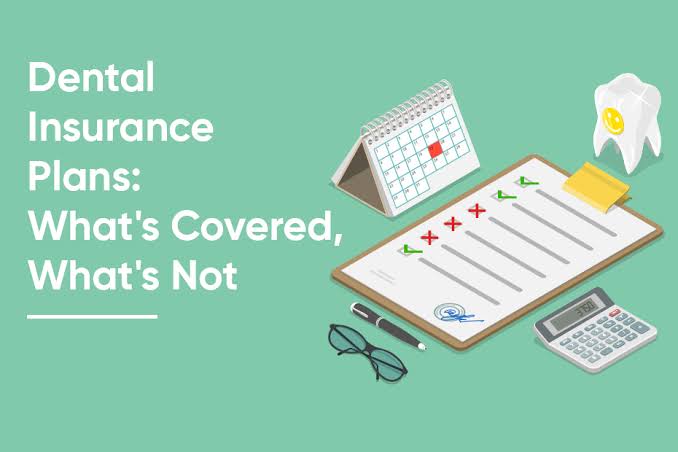Key Takeaways
- Understanding what’s included in typical dental plans can help you make informed decisions.
- Preventive care is often well-covered, while major procedures might have more limitations.
- It’s crucial to review the details of any dental plan before enrolling.
Table of Contents
- Preventive Care Services
- Basic Restorative Procedures
- Major Services and Procedures
- Orthodontic Coverage
- Common Exclusions
- Understanding Cost Structures
- Annual Maximums
- Choosing the Right Plan
Preventive Care Services
Preventive care is the cornerstone of most individual dental plans, emphasizing the importance of maintaining oral health and avoiding complex procedures. Typical preventive services include routine exams, cleanings, fluoride treatments, and X-rays. These are usually covered at a high percentage, often 100%, as they are intended to keep your teeth and gums healthy and to catch any potential issues early. Other preventive measures may include sealants for children, which help protect their molars from cavities.
Preventive care aims to avert more serious dental diseases by promoting good oral hygiene and treating problems before they become serious. Not only does routine dental care keep your smile healthy, but it also improves your general health.
Basic Restorative Procedures
Basic restorative procedures are the next tier of dental services covered by most plans. This includes fillings, tooth extractions, and root canals. Typically, these procedures are covered at a lower percentage than preventive care, often around 70% to 80%. Fillings are used to treat cavities, and the type of filling material covered can vary by plan. Basic extractions, particularly non-surgical ones, are generally included to some extent.
Root canals, though classified as basic restorative procedures, can sometimes fall into a grey area, as their complexity can vary. It’s essential to understand your plan’s specifics concerning these treatments. Also, keep in mind that you might be responsible for a more substantial portion of the cost if you need more sophisticated treatment options.
Major Services and Procedures
Major services generally include more complex and costly procedures like crowns, bridges, dentures, and oral surgery. These are often covered at a lower rate, usually around 50%. Crowns and bridges are used to restore and replace missing or damaged teeth, while dentures are employed when multiple teeth are lost. Due to the higher costs associated with these treatments, dental plans often contain more substantial limitations and higher out-of-pocket expenses.
Orthodontic Coverage
Orthodontic treatments, such as braces and aligners, are often a separate category in dental plans and might have different terms of coverage. These are sometimes included in higher-tier plans and might come with lifetime maximum limits. Typically, coverage for orthodontic treatments ranges between 50% and 70%, with the patient responsible for the remainder.
It’s worth noting that not all dental plans cover orthodontic treatments for adults. Children’s orthodontic needs are more commonly covered, but it’s crucial to review the specifics of any plan regarding age limitations and the types of appliances covered. Orthodontic treatments often come with significant costs, so having a clear understanding of your plan’s details can lead to substantial savings.
Common Exclusions
Understanding what is not covered under your dental plan is as important as knowing what is covered. Cosmetic procedures, such as teeth whitening, veneers, and bonding done for aesthetic purposes, are commonly excluded. Some plans may also exclude certain high-cost treatments, such as specific types of dental implants or advanced periodontal treatments.
It’s essential to read the fine print and be aware of any exclusions to avoid surprises. Plans might also exclude coverage for pre-existing conditions or limit the number of procedures you can receive in a given period. Knowing these exclusions can help you plan and budget effectively for your dental care needs.
Understanding Cost Structures
Dental plans typically have different cost structures, including premiums, deductibles, copayments, and coinsurance. The premium is the amount you pay regularly, usually monthly, to keep your coverage active. The deductible is the amount you must pay out-of-pocket before your insurance begins to cover costs. Once the deductible is met, you might pay a copayment — a fixed amount for each service — or coinsurance, which is a percentage of the cost of the service.
Understanding these components can help you anticipate your expenses better. It’s also useful to compare different plans’ cost structures to choose one that best fits your financial and dental health needs. Make sure to also keep an eye on network restrictions, as using out-of-network providers can result in higher out-of-pocket costs.
Annual Maximums
Dental plans often come with annual maximums, which are the maximum amount a plan will pay for your dental care within a year. Once you reach this limit, you are responsible for any additional costs. The typical annual maximum ranges from $1,000 to $2,000, although some plans may offer higher limits. Understanding the annual maximum can help you plan your treatments effectively throughout the year to avoid exceeding this cap.
Choosing the Right Plan
Choosing the right dental plan involves careful consideration of several factors. Start by assessing your oral health needs and the types of treatments you might require. Consider the coverage details for preventive, basic, and major services, as well as any exclusions that might apply. It’s also essential to check the network of providers to ensure that your chosen or preferred dentist is included.
Review the cost structures, including premiums, deductibles, copayments, and coinsurance, to understand your financial responsibilities. Comparing multiple plans can help you identify one that offers the best balance between cost and coverage.
Taking the time to read the fine print and fully understand the terms of any dental plan can lead to better oral health outcomes and potentially significant cost savings. Additionally, consider plans that offer flexibility, such as the ability to upgrade coverage in the future as your dental health needs evolve.
Get more exciting news and articles at Tribune Tribune!




